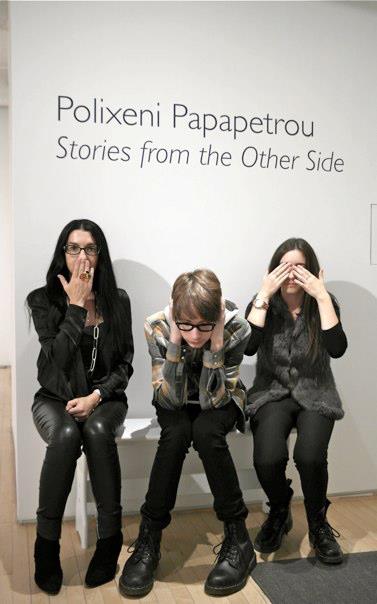Australian photographic artist Polixeni Papapetrou, whose Process interview was featured in January 2013’s issue of the Believer, has tantalized her international following for years with haunting, otherworldly imagery recapturing, recasting, and recreating childhood reverie. In her most recent exhibition, a solo show on till June at Jenkins Johnson Gallery in New York City, Papapetrou has combined chimerical pieces from Between Worlds, where pondering animalistic creatures splash out from their natural landscapes loud with feeling, with pieces from her latest series, The Ghilies, where animalism has retreated into something subtler and more spiritual. Stories From the Other Side craftily combines images of exteriorized longing with images of interiorized yielding.
Writer and media maker Caia Hagel has written several articles on Papapetrou and her work; through their long correspondence, they have become spirited pen pals. They caught up at the NYC opening—where Hagel, unable to resist, asked Papapetrou a few more questions.

(Papapetrou with her model children, Solomon and Olympia. Photo by Robert Nelson.)
THE BELIEVER: You traveled across the world to attend your opening. How was it?
POLIXENI PAPAPETROU: I was delighted to meet people at my opening who came because they wanted to look at the photographs. It was reassuring that most of the questions asked of me were about ideas rather than technique, although that is also a good question! There was a terrific opening address by Susan Bright, who spoke about my connection to the Australian landscape, among other things related to humans and especially children. It was good for the people at the opening to hear about the Australian landscape and to feel that it gave them insight into the works.
BLVR: What kinds of ideas did people ask you about?
PP: In particular I was asked about the meaning of the ghillie. And it was quite hard to explain, because while the origin of the word has something to do with a helpmate, a ghillie suit, is a type of camouflage clothing designed to resemble heavy foliage. It is used in the military for camouflage purposes, but it is also adopted now in a popular way, such as in acting out roles from video games and in paintballing games. The suit is typically a net covered in loose strips of cloth or twine. The suits can be augmented with foliage from the area to further enhance the camouflage aspect. The military, snipers, hunters, and gamers wear the suits to blend into their surroundings or to conceal themselves from their enemies or prey.
People were very curious to know how I first came across...
You have reached your article limit
Sign up for a digital subscription and continue reading all new issues, plus our entire archives, for just $1.50/month.
Already a subscriber? Sign in




